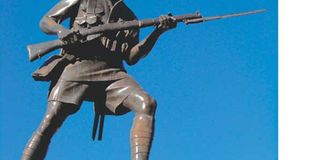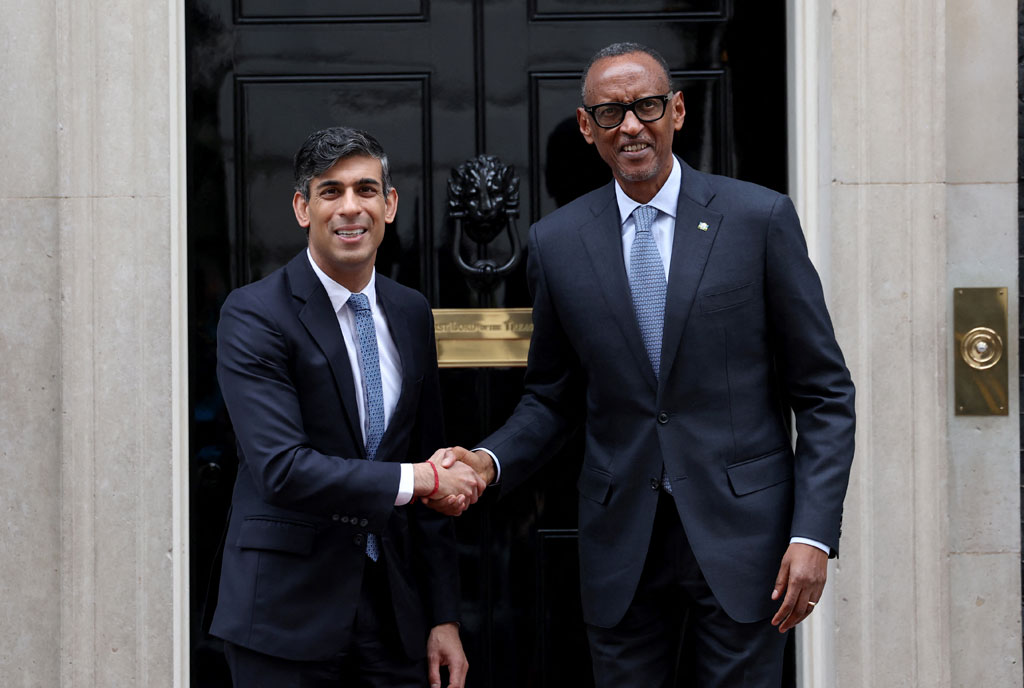Youth creators and climate change

What you need to know:
Looking at the monument as his body perspires heavily, the youth wondered how the Askari would have reacted to the burning heat in Dar City
Dar es Salaam. The two months of November and December last year were inordinately hot, a condition which should not have never come as a surprise at all. This is especially taking into account the seemingly relentless global climate change.
In any case, the Tanzania Meteorological Agency (TMA) referred to the climatic condition as “normal.” Apparently, ‘normal’ here is in the sense that the sun is overhead in the southern hemisphere during the period from October to March.
It’s because of the scientific reality that it is during this period that high temperature conditions are experienced all over the country. TMA says that the overhead sun reaches its maximum in the southern hemisphere between the end of November and the beginning of December as it moves towards the Tropic of Capricorn, the circle of latitude that contains the subsolar point on the southern solstice.
A more or less similar condition is experienced during the month of February as the sun moves towards the Tropic of Cancer, the most northerly circle of latitude on Planet Earth at which the Sun can be directly overhead.
Although it is acknowledged that this is how things happen in Nature, TMA warns that, in the absence of sufficient rainfall distribution, the hot weather condition is enhanced even more.
For example, TMA points out, the average temperature over Dar es Salaam and Tanga for the months of November and December is normally 31.5°C. However, until the end of November 2018 temperatures had reached 34.0°C!
A melting monument
It was in the midst of this terrifying reality that Ngaira Mandara thought it important to use his artistic skills to educate people on the changing weather patterns and their impact in daily life.
Mandara obtained a degree in International Business and Finance from the Nairobi, Kenya-based United States International University (USIS).
Walking downtown Dar es Salaam one hot day, Mandara stopped at the famous Askari Monument in the city centre. Looking at the monument as his body perspiring heavily, the 27-year old fellow wondered how the Monument would have reacted to the searing heat which is turning the metropolis into hell-on-earth!
The Askari Monument is a memorial to members of the British Carrier Corps of the King’s African Rifles (KAR) who participated in World War-I (1914-18). It is located at the center of the traffic roundabout at the Samora Avenue and Maktaba Street – a place that reportedly also marks the centre of downtown Dar. The Monument was formally unveiled in 1927.
“I just wanted to create something that would show people how the ‘Askari’ would react to the heat, and I said I’ld make an animated video showing the Askari wiping sweat from his face,” Mandara told The Citizen in an exclusive interview.
Professionally, Mandara is an illustrator and to turn his idea into a reality, he must have people who can do the animation parts. This led him to Charles Lupali and Goodluck Gabriel, both graduates from the University of Dar es Salaam (UDSM Class of 2016).
The three youths teamed up and came out with unique artwork showing the Askari melting in the heat – and taking his left hand off the gun he is holding at-the-ready with which to wipe the sweat off his face.
When the artwork was unveiled on Twitter, it received good response from netzens worldwide: 293 retweets and 649 likes!
“I was delighted. It was encouraging to see people receive our work beyond what we had imagined,” recalls Gabriel, 25, a UDSM graduate in Computer Engineering and Information Technology.
Garbage flying in the wind
The sweat-wiping Askari animation garnered considerable praise from environmentalists and aesthetes alike. Apparently, this moved the trio to come up with another educative-cum-entertaining animation work.
In their latest work, the Askari is blasted by gusting wind, forcing him to lift his left foot from its position for a moment.
The artists also incorporated in their work an empty plastic bottle and an umbrella. At one point the bottle hits the Askari in the face – and, as the umbrella passes by him, he turns his head to look at it.
“There is too much (plastic) waste in our neighbourhoods,” says bespectacled Gabriel on the motivation behind the idea. “We thought: why not incorporate some of these wastes in our work to remind people of their presence in our midst?”
Although there has been much talk lately about the adverse impact that plastics have on the environment – and the need to ban their use – no steps to enforce the law have so far been made!
And – largely because of the laxity on the relevant authorities in ending use of such plastics in Tanzania – well-wishers have proposed that ordinary Tanzanians should step in the breach and clean up the place even as they/we refrain from using the banned plastics.
However, doing that requires comprehensive sensitisation among Tanzanians.
“We wanted to give the (sensitisation) message using different ways,” Mandara explains. “I think enough has already been documented on the adverse impact of plastics on the environment, and climate change in general. But, the truth remains that [education] resources are just not enough to thoroughly do the job.”
Charles Lupali – a UDSM grad in Computer Science – thinks using of the Askari Monument to graphically sensitize Tanzanians can be a very powerful means of sending the message. This is if only because of the Monument’s historic significance to which Tanzanians can readily relate.
“People will look at [the artwork] – and be like: ‘Oh, I know this place…’ This has a direct influence on how they can digest the message from the artwork, and assimilate the lesson.”
But, like any functional artwork, the Mandara Team’s creations are not limited to their ideas only, or the messages they want them to send.
As Mr Mandara says, “we want the work to be free to interpretation by one and all. We cannot deny people the sweetness of the art!”
Part of a broader project
The Askari Monument animation is part of a broader project titled ‘Streets of Dar es Salaam.’
The brainchild of Mr Mandara, the ‘Askari Monument’ and similar projects seek to capture artistically what happens in the commercial capital’s daily life through animations and other graphic illustrations.
Apart from the Askari Monument animation, the Mandara Team has also created an animation which shows a motorcyclist-for-hire (commonly known as ‘Bodaboda’ in East Africa) carrying three pillion riders simultaneously – derisively known as ‘Mshkaki-on-a-skewer’ in ki-Swahili.
Other works are on ‘Bajaj’ tricycle transporters; cooked food and fruit vendors on street pavements; street cleaners…
“Besides the issues of environment and climatic change, the project also seeks to present people and incidents that we, as citizens, normally don’t pay attention to in an artistic and creative way so as to raise awareness on them -- and why they matter,” Mandara explains.



